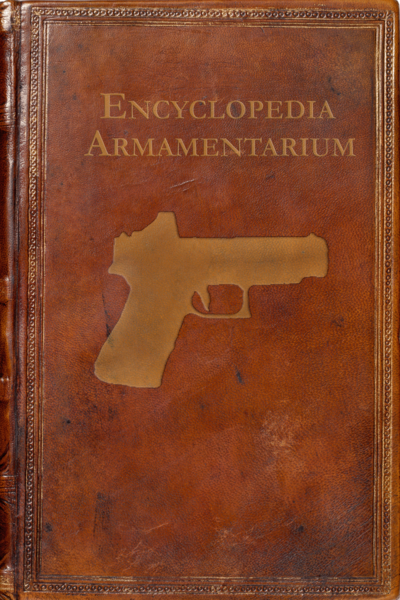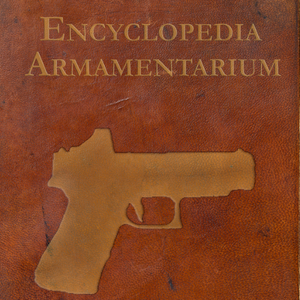If I tried to go over every single sword and gun myth in the media, the sun would run out of hydrogen before I got to the bottom of the barrel. I mean, Jesus H. Christ on a Most Holy Pogo Stick, have you seen a movie lately? Shit’s bananas.
I physically do not have the lifespan left to tell you everything that’s wrong with a single 90s action movie. Trying to MST3K a knight or a samurai flick from that era would probably cause an aneurysm. At some point, you just gotta stop beating your head against that particular wall, or else you’ll die a miserable old pedantic wretch.
Oh, sure, I’m probably gonna do that anyway, on account of the fact that I can’t take my own advice. But for the sake of this Encyclopedia, we’re just gonna cover some of the more common ones, broken down (roughly) by category. This list isn't meant to be whole or complete in any way, shape, or form. Like I said, there's not enough time. That, and by "the more common ones," I mainly mean the ones that piss me off the most. You may not find something you're looking for, and that's fine. The idea is to give you an idea of just how wrong a lot of our conceptions about arms and armaments are, and to get you to think critically about what you think you know.
Note that I’m not gonna mess too much with the whole longsword versus katana topic. That’s getting a whole entry soon.
Also, because Tapas has a 15,000 character limit, I had to break this sucker up into two parts. Cheers.
Handguns
Handguns are only good at close range. This is more of a videogame thing than a Hollywood thing. Hollywood seems to think handguns can double as sniper rifles in a pinch. But a lot of our concept of how handguns work comes from games like Call of Duty or Battlefield. Both of those, with the right handgun, the right optic, and a little luck, will allow you to make longshots with your trusty sidearm. Buuuut since a longshot in CoD is like 40 meters, that’s not saying much. It’s true that the average pistol isn’t much good past 30 meters or so, but that has far more to do with the shooter than the weapon. Skilled shooters can reliably make hits out to 100 meters, or even beyond. There’s a debate to be had about how terminally effective a round will be at that range, but it’s got enough energy to ring steel.
Revolvers are more accurate/reliable/effective than semiautomatics. This one is just straight up Fudd lore. [Fudd (n): gunspeak for boomers.] Like many myths on this list, there’s a grain of truth here. A good quality revolver can, in the right hands, be extremely accurate. They have fewer moving parts, and thus, fewer failure points. And, they function independently of things like gas pressure or the shooter’s grip. You can also shoot extremely powerful loads out of a revolver. To the best of my knowledge, there’s not a single autoloading pistol that can handle something like S&W .500 Magnum. But, like most Fudd lore, this particular myth falls apart on closer inspection. Revolvers can be extremely accurate in the right hands, but those hands probably aren’t yours. You still need to train in order to get the most out of a revolver. Revolvers can and do malfunction, and in some ways are more susceptible to mud, dust, and pocket lint. And yes, they can shoot massively powerful rounds, but unless you’re trying to get into gunfights with polar bears, all the S&W .500 Magnum is good for is dick measuring. And here’s a hint: the bullet is bigger.
Muh stopping power. More Fudd lore for you: stopping power is totally something you should care about. For the uninitiated, stopping power refers to a bullet’s ability to stop a fully grown person in their tracks. The bigger and faster the bullet, the more energy it delivers to a target, and thus, more stopping power. There’s just one little problem with this myth: it literally doesn’t matter. Oh, sure, there are outliers. Everyone with a brain pretty much agrees that .22LR is too weak to serve as an effective self defense round, and something like .44 Magnum will take out a meth-addled honey badger. But when it comes to pistol rounds, being able to place multiple accurate rounds on the target matters far more than how big your bore is. The most powerful gun in the world doesn’t mean a goddamn thing if you can’t reliably get good hits on the target.
So easy, a caveman could do it. There’s this idea that shooting a handgun is like a bicycle, that you never have to practice once you learn. Or that someone who’s never picked one up will rise to the occasion and become John Wick if they find themselves in a tight spot. In reality, handgun marksmanship is a perishable skill, to a ridiculous extent. If you don’t routinely practice things like sight alignment, proper grip, proper trigger control, recoil management, or even drawing from a holster, you’re going to be in for an extremely bad day in the unfortunate event that you ever have to use the damn thing. Cops, both fictional and real world, tend to have abysmal marksmanship in times of crisis, because they fire their guns once a year and call it a day. The detective who sits behind his desk all day and is two weeks away from retirement is not going to turn into a hero at the drop of a hat. This is true of all weapons, be they blade, bow, or gun, but handguns are notoriously bad about it.
Drop and Pop. Everyone knows that a gun will go off if you drop it, right? That’s a thing that everyone totally knows, because they see it in the movies all the time. Once again, there’s a kernel of truth here. Guns that are older, cheaply made, poorly maintained, or badly abused might go boom if you drop them. Certain modern guns, like the SIG P320, earned a bad reputation because early models failed the drop test. The fact that there’s something called a drop test ought to tell you that this is something that modern manufacturers take into consideration when they design modern handguns, nearly all of which are perfectly safe to drop, within reason. Obviously, if you start chucking guns at the ground to see what happens, you’ve no one but yourself to blame if you break something. But for the most part, it’s perfectly safe to drop a gun. You’re far more likely to hurt yourself trying to catch it as it falls. That’s how they tend to go boom on accident.
Assault Rifles
Civilian rifles are “weapons of war.” I know I said I’d stay away from the politics, and that’s still the plan, but this one needs to be touched upon briefly because the politics feed fiction and vice versa. Firstly, the term “assault rifle” refers to a very particular sort of weapon, namely, a rifle that fires an intermediate cartridge [intermediate cartridge (n): a bullet in between a pistol and a rifle round in terms of power, designed to be more controllable under rapid fire] that either has a burst or fully automatic firing option. Civilian ARs, AKs, and other similar weapons don’t count. Though they ape the aesthetic, you need a special license to give them a giggle switch, not to mention special parts that are hard to come by. The term “assault weapon” was created out of whole cloth for legal reasons, and largely covers cosmetic, rather than functional features. Despite their reputation as weapons of war, the civilian variants are more frequently used for hunting, recreation, or home defense. I guess you could press a competition tuned race gun into battlefield service in a pinch, but it’s probably going to jam the second you even think about getting it dirty or feeding it shitty milspec [milspec (adj): military specification; made poorly for cheap and sold at a massive profit] military ammo. But hey, what do I know? I just build the fucking things. Look, if you don’t think civilians should own them, I’m not gonna sit here and preach to you. That’s not what we’re here for. But, if you’re writing a character that’s supposed to know about guns, they should probably know this stuff too. You’ll know you’ve got the right tone if they roll their eyes so hard their retinas detach whenever anyone starts talking about civilian ARs being designed for war. So were zippers and sanitary pads, and if you don’t think those can be a lethal combination, I’m gonna guess you’re single and have a penis.
So easy, a caveman could do it (redux). I feel like this goes for a lot of shit, because Hollywood and Dunning-Kruger go hand in hand. Much like handguns, rifle marksmanship is a skill that has to be acquired through hard work and retained through consistent practice. Now, I’ll grant that the skill dropoff isn’t nearly as steep. Having a shoulder stock helps a whole hell of a lot, as does the longer sight radius and the fact that rifles are rarely considered “oh shit” weapons. In other words, you're less likely to have to use one in an emergency. But, as someone who used to train 18 and 19 year old kids how to hit the broad side of a barn from the inside, I physically cannot tell you how much I loathe videogame “knowledge” about how these fucking things work. I’ve been shooting rifles and shotguns for a couple of decades now. If I pick one up that I’ve never held before, I’ve got a decent chance of figuring out how to get rounds on target. I won’t be able to pick my shots, because the rifle won’t be zeroed to my eye and to my body, but I can get close enough to count. Put that same gun into the hands of a complete novice whose only exposure is media, and the safest place to stand is directly in front of them. A good instructor can coach a quick learner onto target in the span of an afternoon, sure. But without that basic investment of time and effort, you might as well chuck the damn thing at the bad guys.
“High powered.” This is another one of those Hollywoodisms. By definition, assault rifles are not high powered. They tend to use smaller cartridges than hunting rifles, both as a means to save weight, increase ammunition capacity, and as a way to keep the weapon controllable under full automatic fire. The most common two assault rifle calibers, 5.56x45 NATO and 7.62x39 [NOTE: when you see cartridges listed like that, it’s always in millimeters; caliber expressed as something like .38 or .45 measures in hundredths of an inch], both approach that objective from different angles. The 5.56, commonly used in AR pattern rifles, is the same diameter as the .22 Long Rifle, commonly used for hunting squirrels and other small game. The difference is in velocity. 5.56 relies on speed to inflict damage on the target, and is basically useless once it slows to transonic. The 7.62x39 round of the AK uses the same .30 caliber projectile as a lot of full sized rifle rounds, but with a much shorter case. Compare to 7.62x51 NATO or 7.62x54r. The result is a smaller overall cartridge that’s relatively easy to handle and has enough mass to get the job done, at the cost of range. There have been attempts to replicate the success of the assault rifle with full sized rifle cartridges, such as the FAL or H&K G3, but they’re typically classed as battle rifles today. They can fill a niche on the battlefield, but they’re neither light nor handy enough to work as assault rifles.
One shot, one kill. One shot ain’t gonna cut it. This one is politics, movies, and Fudds all coming together against “high capacity magazines.” Note the scare quotes; 30 rounds is the standard for most assault rifles. High capacity typically involves things like drum magazines, which are historically a bad idea. But, we’re not going to get into the politicking here so much as the tactics. Movies and games like to show that a real badass just needs one good shot on the bad guy, while only posers and villains spray and pray. In reality, the US Marines tried that and ended up being investigated for war crimes. In the early stages of Iraq, they started handing out headshots like struggling actresses and the brass freaked out because they thought the jarheads had started executing prisoners. Mostly, infantry just hoses down the general area where the bad guys are with as much lead as possible. Throw out enough bullets to keep the bad guys pinned down, and someone else can do the real killing. This is a tactic called suppressive fire, and it’s an excellent way to fight a war if you have things like air superiority and precision artillery, or friendly infantry units who can hit them from the flank. It does eat up an awful lot of ammo, though. In the civilian world, suppressive fire is generally frowned upon. But, when the adrenaline gets pumping and fight or flight kicks in, the chances of the average civilian putting down an attacker with a single, well placed shot are basically nil. Not nonzero, but close enough to be a statistical anomaly.
The AR constantly jams, the AK-47 always works. At some point, I’m going to do an AR vs AK piece. That was one of the stretch goals. But, this one bears repeating: on the whole, the long stroke gas piston operating system of the AK platform is less susceptible to interference from dust, sand, and other grime. However, the AR vastly outperforms the AK in muddy environments, where the closed receiver and tight tolerances prevent ingress in the first place. The idea that the AR platform is unreliable comes almost entirely from Vietnam, where early run M16 assault rifles were issued with substandard ammunition that fouled the guns, and without cleaning kits to remove said fouling. A modern AR with a properly tuned gas system is as reliable as anyone could hope for. Generally speaking, AKs and other piston operated guns like the HK-416 will be slightly more reliable in certain conditions, but like all things in life, there are tradeoffs. Increased weight, complexity, and felt recoil all have to be taken into consideration. Bottom line is, there is no one rifle to rule them all. They were all designed with different design considerations, so as long as you use them in the manner in which they were intended, any modern assault rifle is going to be reasonably reliable.










Comments (0)
See all